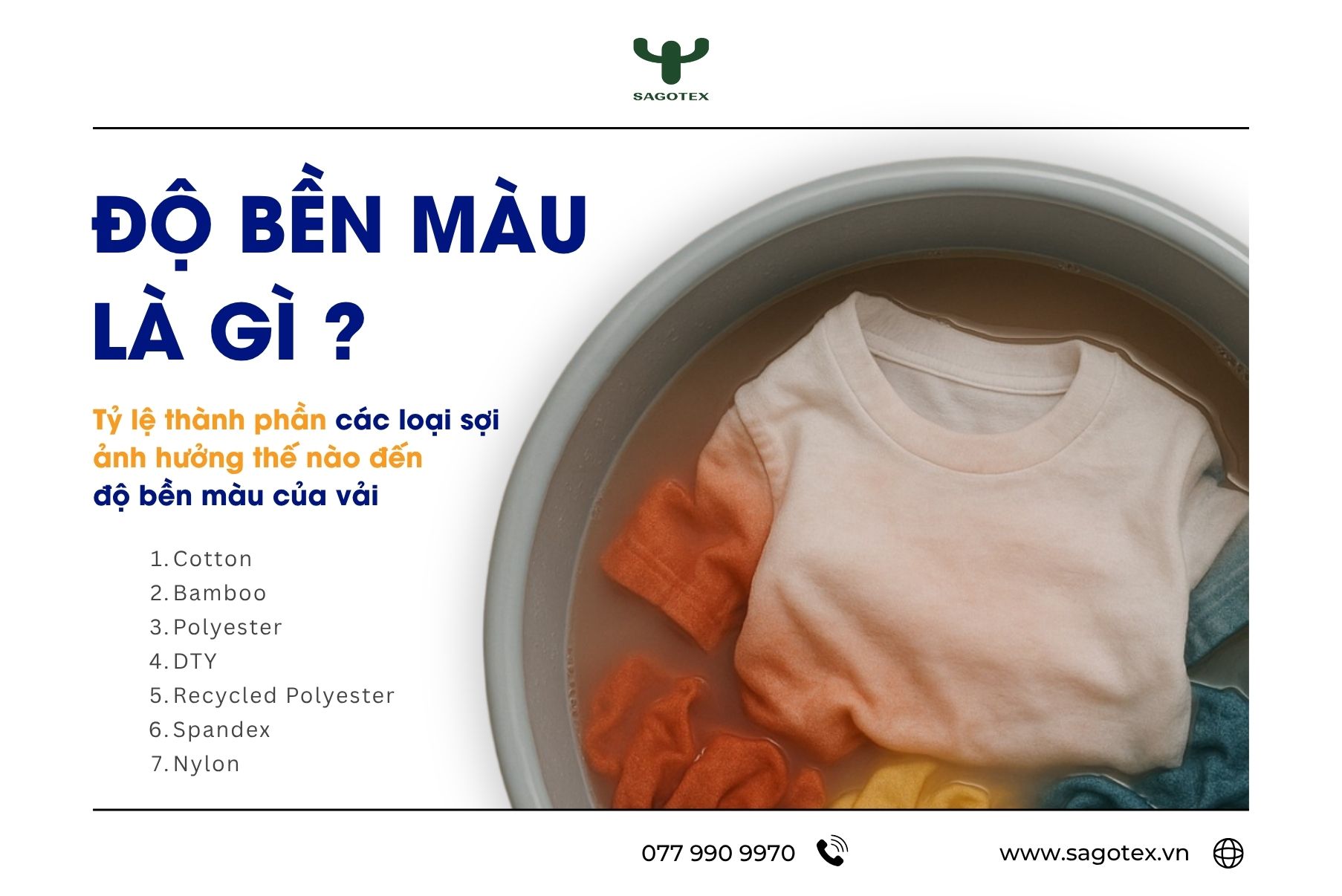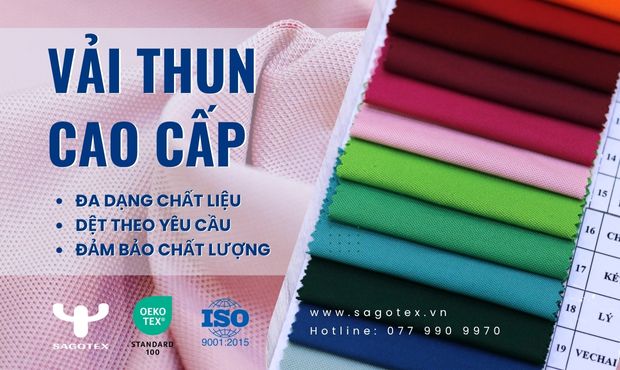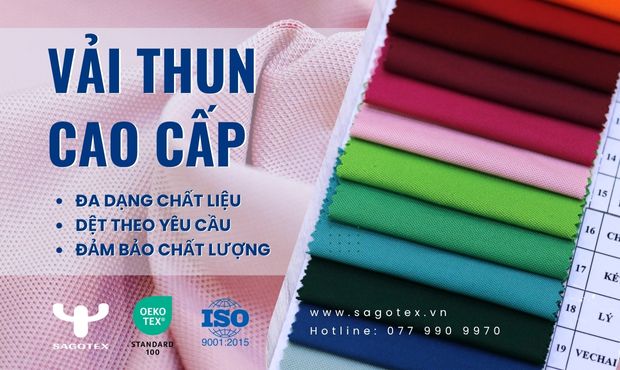What is fabric GSM? How does GSM affect fabric quality?
What is Fabric GSM? How Does GSM Affect Fabric Quality?
For those working in the textile or garment manufacturing industry, GSM is certainly not a new concept. This index appears in almost every stage — from production to product pricing — highlighting how essential it is to understand GSM correctly in the fabric industry.
But what about those outside the field?
Many people simply think of GSM as the feeling of how “heavy” or “light” a piece of fabric feels in hand. This understanding isn’t wrong, but it’s only a small part of the bigger picture. In reality, GSM directly influences a fabric’s thickness, durability, comfort, and overall finishing quality.
Understanding GSM not only helps manufacturers control product quality but also helps consumers choose the most suitable fabric for their needs.
What Does GSM Mean?
GSM (Grams per Square Meter) is a measurement we often see when buying fabrics or any fashion products. It’s considered one of the key indicators of a fabric’s quality.
In simple terms, GSM represents the weight in grams of one square meter of fabric.
-
G = Grams
-
S = Square
-
M = Meter
→ Together: Grams per Square Meter
Example:
A fabric with a GSM of 200 weighs 200 grams per square meter (200 g/m²).
The higher the GSM, the thicker and heavier the fabric. Conversely, a lower GSM means the fabric is lighter and thinner.
Why Is GSM Important in Fabric Production?
Each fabric type is designed for a different purpose — some need to be lightweight and breathable, while others must be thick, durable, or structured.
To ensure the final product meets these requirements, GSM serves as the key measurement for controlling the fabric’s weight and consistency across every meter.
If GSM is not calculated and controlled properly, even a small deviation of a few dozen grams can cause:
-
The fabric to become too thick, hot, and wasteful in material use.
-
Or too thin, losing shape and durability after just a few uses.
That’s why in any textile production line, checking GSM is a mandatory step to:
-
Maintain consistent quality across batches.
-
Ensure each roll meets technical standards.
-
Accurately calculate production costs and material consumption.
In short, GSM is the key balance point between quality, efficiency, and production cost.
What Can GSM Tell You When Buying Fabric?
1. Helps You Compare and Choose the Right Fabric
Knowing a fabric’s GSM helps you quickly determine its purpose and suitability.
-
Low GSM (below 150 GSM):
Lightweight, soft, and breathable — ideal for t-shirts, dress shirts, summer dresses, shorts, or sportswear.
These fabrics feel cool and comfortable but tend to wrinkle and lose shape faster. -
Medium GSM (150–350 GSM):
Balanced between breathability and durability — suitable for polo shirts, trousers, light jackets, and uniforms.
This is the most versatile range, offering structure without sacrificing comfort. -
High GSM (above 350 GSM):
Heavy and structured — perfect for sweaters, hoodies, leather jackets, blankets, or winter garments.
While durable, these fabrics are less stretchy and less breathable, making them less ideal for hot weather.
How GSM Affects Fabric Quality
GSM is a key indicator used to evaluate and control fabric quality, but it’s important to understand its role correctly.
A high GSM doesn’t automatically mean a high-quality fabric, and a low GSM doesn’t always indicate poor quality.
-
Fabrics with low GSM are typically light, thin, and airy — ideal for sportswear or summer outfits. But if the GSM is too low, the fabric may tear, pill, or fade more easily.
-
Fabrics with high GSM tend to be more durable and hold their shape better. However, excessively high GSM can make the fabric too heavy, stiff, and slow to dry, reducing comfort.
⚠️ Important note: GSM is not the only factor determining durability or fabric performance.
Actual quality also depends on:
-
Fiber composition (cotton, polyester, spandex, etc.)
-
Weave or knit structure (interlock, pique, single jersey, etc.)
-
Finishing technology (anti-shrink, anti-pilling, antibacterial, softening, etc.)
In summary: GSM reflects a fabric’s thickness, weight, and absorption capacity.
But to truly assess quality, one must consider GSM together with fiber type, weave structure, and finishing process — the combination that creates a fabric both durable and comfortable to wear.
How to Calculate Fabric GSM
1. Basic GSM Formula
GSM=(FabricSampleWeight/SampleArea)×10,000GSM = (Fabric Sample Weight / Sample Area) × 10,000
Where:
-
Sample weight = in grams (g)
-
Sample area = in square centimeters (cm²)
-
10,000 = conversion factor from cm² to m²
Example:
If you cut a 10×10 cm sample (100 cm²) weighing 2 grams, then:
GSM = (2 / 100) × 10,000 = 200 GSM
That means 1 square meter of this fabric weighs 200 grams.
2. Professional GSM Measuring Tools
In textile labs, GSM is measured using a GSM Cutter and a precision digital scale to ensure high accuracy.
Steps:
-
Cut a circular fabric sample (diameter 11.3 cm = 100 cm²).
-
Weigh it on a precision scale (accuracy up to 0.01 g).
-
Multiply the result by 100 to get GSM (100 cm² × 100 = 1 m²).
This ensures consistency across batches, with a deviation of less than ±5%.
3. Simple Home Method (for Reference)
If you don’t have professional tools:
-
Cut a 10×10 cm fabric sample.
-
Weigh it using a digital kitchen scale.
-
Multiply the weight (in grams) by 100 to get GSM.
Example: 1.8 g × 100 = 180 GSM.
This method gives a close approximation for basic comparison between fabrics.
Conclusion
Through this article, Sagotex has provided a comprehensive overview of fabric GSM — a key factor in determining the thickness, weight, and overall quality of a fabric.
Understanding GSM helps manufacturers maintain consistent standards and helps consumers choose fabrics that truly fit their needs.
At Sagotex, every meter of fabric is precisely measured and quality-checked, ensuring consistency and comfort in every weave.
We believe that true quality comes from accuracy, care, and balance between technical standards and the comfort of real-world wear.Sagotex – Only the best for you.
SAGOTEX – Only the Best for You
-
Hotline: 077 990 9970
-
Email: info@sagotex.vn
-
Website: www.sagotex.vn
-
Fanpage: Sagotex.vn – Vải Thun Cao Cấp
-
Head Office: 45 Đinh Thị Thi, Vạn Phúc Urban Area, Hiệp Bình Phước, Thủ Đức, HCMC
-
Factory: Lô I1-2-3, KCN Tân Đức, Xã Đức Hòa Hạ, Huyện Đức Hòa, Long An


-68a58592e1203.jpg)

- 1
- 2


-68ef59b22bb98.jpg)

